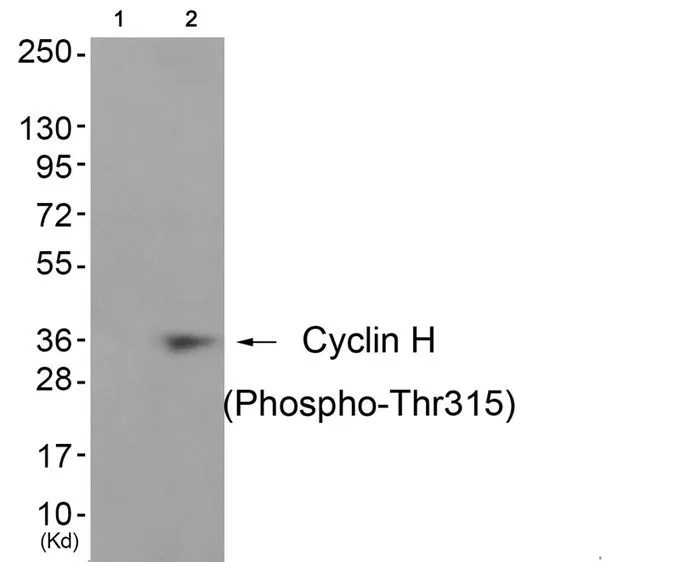
GTX55316 WB Image
Cyclin H (phospho Thr315) antibody

GTX55316
Overview
- SupplierGeneTex
- Product NameCyclin H (phospho Thr315) antibody
- Delivery Days Customer10
- ApplicationsWestern Blot
- CertificationResearch Use Only
- ClonalityPolyclonal
- Concentration1 mg/ml
- HostRabbit
- IsotypeIgG
- Modification TypePhosphorylated
- Scientific DescriptionThe protein encoded by this gene belongs to the highly conserved cyclin family, whose members are characterized by a dramatic periodicity in protein abundance through the cell cycle. Cyclins function as regulators of CDK kinases. Different cyclins exhibit distinct expression and degradation patterns which contribute to the temporal coordination of each mitotic event. This cyclin forms a complex with CDK7 kinase and ring finger protein MAT1. The kinase complex is able to phosphorylate CDK2 and CDC2 kinases, thus functions as a CDK-activating kinase (CAK). This cyclin and its kinase partner are components of TFIIH, as well as RNA polymerase II protein complexes. They participate in two different transcriptional regulation processes, suggesting an important link between basal transcription control and the cell cycle machinery. A pseudogene of this gene is found on chromosome 4. Alternate splicing results in multiple transcript variants.[provided by RefSeq, Nov 2010]
- ReactivityHuman
- Storage Instruction2°C to 8°C,-20°C
- UNSPSC12352203
References
- Functional Relevance of the Interaction between Human Cyclins and the Cytomegalovirus-Encoded CDK-Like Protein Kinase pUL97. Schuetz M et al., 2021 Jun 27, VirusesRead more
- Functional Relevance of the Interaction between Human Cyclins and the Cytomegalovirus-Encoded CDK-Like Protein Kinase pUL97. Schuetz M et al., 2021 Jun 27, VirusesRead more
